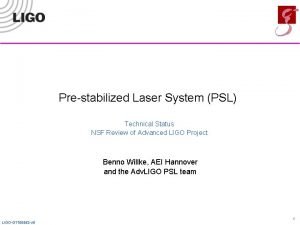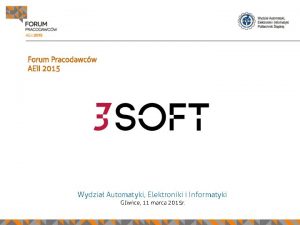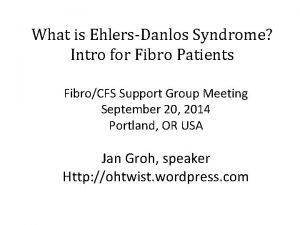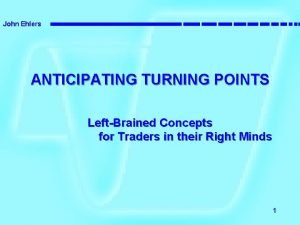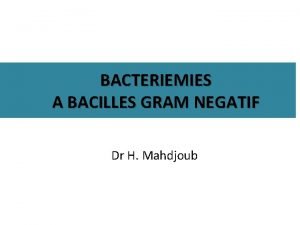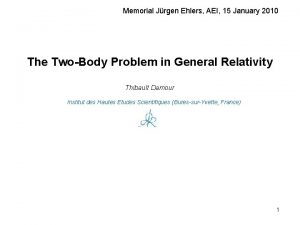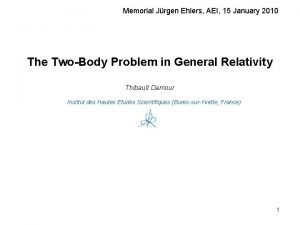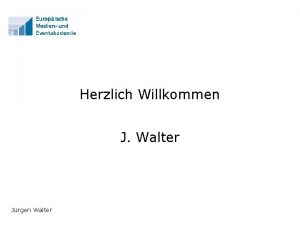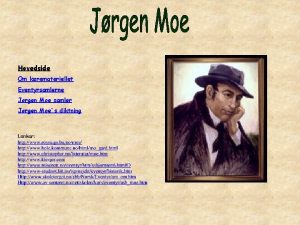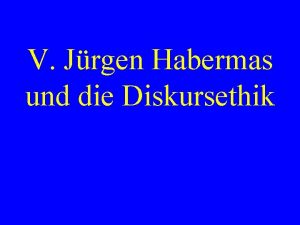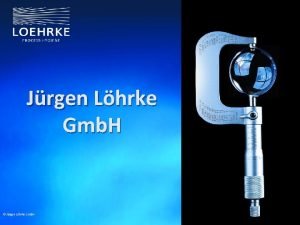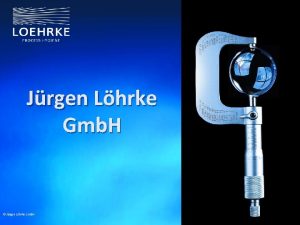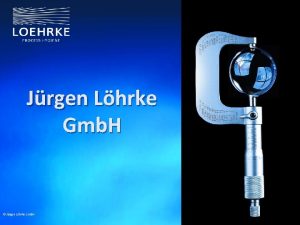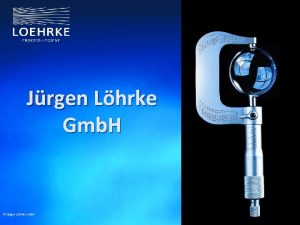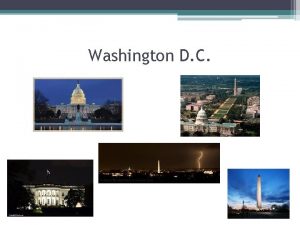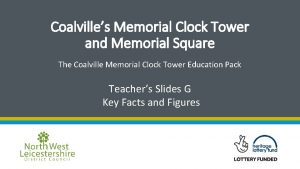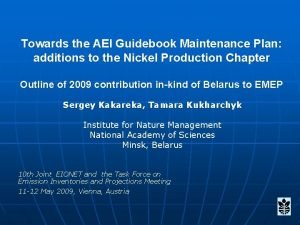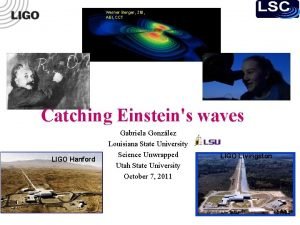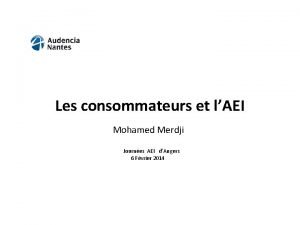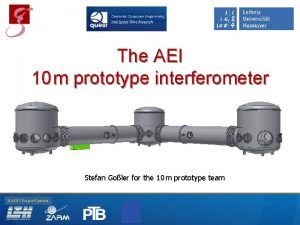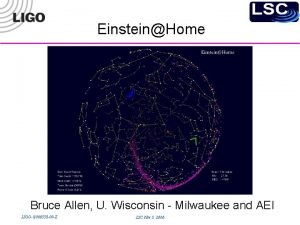Memorial Jrgen Ehlers AEI 15 January 2010 The




![2 -body Taylor-expanded 3 PN Hamiltonian [JS 98, DJS 00, 01] 1 PN 2 2 -body Taylor-expanded 3 PN Hamiltonian [JS 98, DJS 00, 01] 1 PN 2](https://slidetodoc.com/presentation_image_h2/8c1348705549e5d3fad2f31713ac5572/image-5.jpg)







![Historical roots of EOB HEOB : QED positronium states [Brezin, Itzykson, Zinn-Justin 1970] “Quantum” Historical roots of EOB HEOB : QED positronium states [Brezin, Itzykson, Zinn-Justin 1970] “Quantum”](https://slidetodoc.com/presentation_image_h2/8c1348705549e5d3fad2f31713ac5572/image-13.jpg)





![2 -body Taylor-expanded 3 PN Hamiltonian [JS 98, DJS 00, 01] 1 PN 2 2 -body Taylor-expanded 3 PN Hamiltonian [JS 98, DJS 00, 01] 1 PN 2](https://slidetodoc.com/presentation_image_h2/8c1348705549e5d3fad2f31713ac5572/image-19.jpg)



![Radiation reaction: parameter-free resummation Different possible representations of the residual amplitude correction [Padé] The Radiation reaction: parameter-free resummation Different possible representations of the residual amplitude correction [Padé] The](https://slidetodoc.com/presentation_image_h2/8c1348705549e5d3fad2f31713ac5572/image-23.jpg)











- Slides: 34

Memorial Jürgen Ehlers, AEI, 15 January 2010 The Two-Body Problem in General Relativity Thibault Damour Institut des Hautes Etudes Scientifiques (Bures-sur-Yvette, France) 1

The Problem of Motion in General Relativity Solve e. g. and extract physical results, e. g. • Lunar laser ranging • timing of binary pulsars • gravitational waves emitted by binary black holes 2

Various issues • post-Minkowskian (Einstein 1916) Approximation Methods • post-Newtonian (Droste 1916) • Matching of asymptotic expansions body zone / near zone / wave zone • Numerical Relativity One-chart versus Multi-chart approaches Coupling between Einstein field equations and equations of motion (Bianchi ) Strongly self-gravitating bodies : neutron stars or black holes : Skeletonization : T point-masses ? -functions in GR Multipolar Expansion Need to go to very high orders of approximation Use a “cocktail”: PM, PN, MPM, MAE, EFT, an. reg. , dim. reg. , … 3

Motion of two point masses Dimensional continuation : Dynamics : up to 3 loops, i. e. 3 PN Jaranowski, Schäfer 98 Blanchet, Faye 01 Damour, Jaranowski Schäfer 01 Itoh, Futamase 03 Blanchet, Damour, Esposito-Farèse 04 Radiation : up to 3 PN Blanchet, Iyer, Joguet, 02, Blanchet, Damour, Esposito-Farèse, Iyer 04 Blanchet, Faye, Iyer, Sinha 08 4
![2 body Taylorexpanded 3 PN Hamiltonian JS 98 DJS 00 01 1 PN 2 2 -body Taylor-expanded 3 PN Hamiltonian [JS 98, DJS 00, 01] 1 PN 2](https://slidetodoc.com/presentation_image_h2/8c1348705549e5d3fad2f31713ac5572/image-5.jpg)
2 -body Taylor-expanded 3 PN Hamiltonian [JS 98, DJS 00, 01] 1 PN 2 PN 3 PN 5

Taylor-expanded 3 PN waveform Blanchet, Iyer, Joguet 02, Blanchet, Damour, Esposito-Farese, Iyer 04, Kidder 07, Blanchet et al. 08 6

Renewed importance of 2 -body problem • Gravitational wave (GW) signal emitted by binary black hole coalescences : a prime target for LIGO/Virgo/GEO • GW signal emitted by binary neutron stars : target for advanced LIGO…. BUT • Breakdown of analytical approach in such strong-field situations ? expansion parameter during coalescence ! ? • Give up analytical approach, and use only Numerical Relativity ? 7

Binary black hole coalescence Image: NASA/GSFC 8

Templates for GWs from BBH coalescence (Brady, Craighton, Thorne 1998) Inspiral (PN methods) (Buonanno & Damour 2000) Ringdown (Perturbation theory) Merger: highly nonlinear dynamics. (Numerical Relativity) Numerical Relativity, the 2005 breakthrough: Pretorius, Campanelli et al. , Baker et al. … 9

An improved analytical approach EFFECTIVE ONE BODY (EOB) approach to the two-body problem Buonanno, Damour 99 Buonanno, Damour 00 Damour, Jaranowski, Schäfer 00 Damour, 01 Damour, Nagar 07, Damour, Iyer, Nagar 08 (2 PN Hamiltonian) (Rad. Reac. full waveform) (3 PN Hamiltonian) (spin) (factorized waveform) 10

Importance of an analytical formalism Theoretical: physical understanding of the coalescence process, especially in complicated situations (arbitrary spins) Practical: need many thousands of accurate GW templates for detection & data analysis; need some “analytical” representation of waveform templates as f(m 1, m 2, S 1, S 2) Solution: synergy between analytical & numerical relativity Hybrid Perturbation Theory PN Resummed Perturbation thy EOB non perturbative information Numerical Relativity 11

Structure of EOB formalism PN dynamics PN rad losses DD 81, D 82, DJS 01, IF 03, BDIF 04 WW 76, BDIWW 95, BDEFI 05 Resummed DIS 98 Resummed BD 99 EOB Hamiltonian HEOB PN waveform BD 89, B 95, 05, ABIQ 04, BCGSHHB 07, DN 07, K 07, BFIS 08 Resummed DN 07, DIN 08 BH perturbation RW 57, Z 70, T 72 QNM spectrum N = N + i N EOB Rad reac Force F EOB Dynamics Factorized waveform Factorized Matching . around tm EOB Waveform 12
![Historical roots of EOB HEOB QED positronium states Brezin Itzykson ZinnJustin 1970 Quantum Historical roots of EOB HEOB : QED positronium states [Brezin, Itzykson, Zinn-Justin 1970] “Quantum”](https://slidetodoc.com/presentation_image_h2/8c1348705549e5d3fad2f31713ac5572/image-13.jpg)
Historical roots of EOB HEOB : QED positronium states [Brezin, Itzykson, Zinn-Justin 1970] “Quantum” Hamiltonian H(Ia) [Damour-Schäfer 1988] Padé resummation [Padé 1892] h(t) : [Davis, Ruffini, Tiomno 1972] CLAP [Price-Pullin 1994] F [DIS 1998] A(r) [DJS 00] Factorized waveform [DN 07] Burst: the particle crosses the “light ring”, r=3 M Discovery of the structure: Precursor (plunge)-Burst (merger)-Ringdown, quasi-normal mode (QNMs) tail. Spacetime oscillations Precursor: Quadrupole formula (Ruffini-Wheeler approximation) 13

Some key references PN NR Wagoner & Will 76 Damour & Deruelle 81, 82; Blanchet & Damour 86 Damour & Schafer 88 Blanchet & Damour 89; Blanchet, Damour Iyer, Will, Wiseman 95 Blanchet 95 Jaranowski & Schafer 98 Damour, Jaranowski, Schafer 01 Blanchet, Damour, Esposito-Farese & Iyer 05 Kidder 07 Blanchet, Faye, Iyer & Sinha, 08 Brandt & Brugmann 97 Baker, Brugmann, Campanelli, Lousto & Takahashi 01 Baker, Campanelli, Lousto & Takahashi 02 Pretorius 05 Baker et al. 05 Campanelli et al. 05 Gonzalez et al. 06 Koppitz et al. 07 Pollney et al. 07 Boyle et al. 07 Scheel et al. 08 EOB Buonanno & Damour 99, 00 Damour 01 Damour Jaranowski & Schafer 00 Buonanno et al. 06 -09 Damour & Nagar 07 -09 Damour, Iyer & Nagar 08 14

Real dynamics versus Effective dynamics Real dynamics G G 3 2 loops Effective dynamics G 2 1 loop G 4 3 loops Effective metric 15

Two-body/EOB “correspondence”: think quantum-mechanically (Wheeler) Real 2 -body system (m 1, m 2) (in the c. o. m. frame) an effective particle of mass in some effective metric g eff(M) Sommerfeld “Old Quantum Mechanics”: Hclassical(q, p) Hclassical(Ia) 16

The 3 PN EOB Hamiltonian Real 2 -body system (m 1, m 2) (in the c. o. m. frame) 1: 1 map an effective particle of mass =m 1 m 2/(m 1+m 2) in some effective metric g eff(M) Simple energy map Simple effective Hamiltonian crucial EOB “radial potential” A(r) 17

Explicit form of the effective metric The effective metric g eff(M) at 3 PN where the coefficients are a -dependent “deformation” of the Schwarzschild ones: u = 1/r Compact representation of PN dynamics Bad behaviour at 3 PN. Use Padé resummation of A(r) to have an effective horizon. Impose [by continuity with the =0 case] that A(r) has a simple zero [at r≈2]. The a 5 and a 6 constants parametrize (yet) uncalculated 4 PN corrections and 5 PN corrections 18 18
![2 body Taylorexpanded 3 PN Hamiltonian JS 98 DJS 00 01 1 PN 2 2 -body Taylor-expanded 3 PN Hamiltonian [JS 98, DJS 00, 01] 1 PN 2](https://slidetodoc.com/presentation_image_h2/8c1348705549e5d3fad2f31713ac5572/image-19.jpg)
2 -body Taylor-expanded 3 PN Hamiltonian [JS 98, DJS 00, 01] 1 PN 2 PN 3 PN 19

Hamilton's equation + radiation reaction The system must lose mechanical angular momentum Use PN-expanded result for GW angular momentum flux as a starting point. Needs resummation to have a better behavior during late-inspiral and plunge. PN calculations are done in the circular approximation RESUM! Parameter-dependent EOB 1. * [DIS 1998, DN 07] Parameter -free: EOB 2. 0 [DIN 2008, DN 09] 20

Taylor-expanded 3 PN waveform Blanchet, Iyer, Joguet 02, Blanchet, Damour, Esposito-Farese, Iyer 04, Kidder 07, Blanchet et al. 08 21

EOB 2. 0: new resummation procedures (DN 07, DIN 2008) Resummation of the waveform multipole by multipole Factorized waveform for any (l, m) at the highest available PN order (start from PN results of Blanchet et al. ) Next-to-Quasi-Circular correction Newtonian x PN-correction remnant phase correction remnant modulus correction: l-th power of the (expanded) l-th root of flm improves the behavior of PN corrections The “Tail factor” Effective source: EOB (effective) energy (even-parity) Angular momentum (odd-parity) resums an infinite number of leading logarithms in tail effects 22
![Radiation reaction parameterfree resummation Different possible representations of the residual amplitude correction Padé The Radiation reaction: parameter-free resummation Different possible representations of the residual amplitude correction [Padé] The](https://slidetodoc.com/presentation_image_h2/8c1348705549e5d3fad2f31713ac5572/image-23.jpg)
Radiation reaction: parameter-free resummation Different possible representations of the residual amplitude correction [Padé] The “adiabatic” EOB parameters (a 5, a 6) propagate in radiation reaction via the effective source. 23

Test-mass limit (n=0): circular orbits Parameter free resummation technique! 24

EOB 2. 0: Next-to-Quasi-Circular correction: EOB U NR Next-to quasi-circular correction to the l=m=2 amplitude a 1 & a 2 are determined by requiring: The maximum of the (Zerilli-normalized) EOB metric waveform is equal to the maximum of the NR waveform That this maximum occurs at the EOB “light-ring” [i. e. , maximum of EOB orbital frequency]. Using two NR data: maximum NQC correction is added consistently in RR. Iteration until a 1 & a 2 stabilize Remaining EOB 2. 0 flexibility: Use Caltech-Cornell [inspiral-plunge] data to constrain (a 5, a 6) A wide region of correlated values (a 5, a 6) exists where the phase difference can be reduced at the level of the numerical error (<0. 02 radians) during the inspiral 25

EOB metric gravitational waveform: merger and ringdown EOB approximate representation of the merger (DRT 1972 inspired) : sudden change of description around the “EOB light-ring” t=tm (maximum of orbital frequency) “match” the insplunge waveform to a superposition of QNMs of the final Kerr black hole matching on a 5 -teeth comb (found efficient in the test-mass limit, DN 07 a) comb of width around 7 M centered on the “EOB light-ring” use 5 positive frequency QNMs (found to be near-optimal in the test-mass limit) Final BH mass and angular momentum are computed from a fit to NR ringdown (5 eqs for 5 unknowns) Total EOB waveform covering inspiral-merger and ringdown 26

Binary BH coalescence: Numerical Relativity waveform 1: 1 (no spin) Caltech-Cornell simulation. Inspiral: Df<0. 02 rad; Ringdown: Df~0. 05 rad Boyle et al 07, Scheel et al 09 Ringdown Early inspiral Late inspiral & Merger Late inspiral and merger is non perturbative Only describable by NR ? 27

Comparison Effective-One-Body (EOB) vs NR waveforms “New” EOB formalism: EOB 2. 0 NR Two unknown EOB parameters: 4 PN and 5 PN effective corrections in 2 -body Hamiltonian, (a 5, a 6) NR calibration of the maximum GW amplitude Need to “tune” only one parameter Banana-like “best region” in the (a 5, a 6) plane extending from (0, -20) to (-36, 520) (where D ≤ 0. 02) Damour & Nagar, Phys. Rev. D 79, 081503(R), (2009) Damour, Iyer & Nagar, Phys. Rev. D 79, 064004 (2009) 28

EOB 2. 0 & NR comparison: 1: 1 & 2: 1 mass ratios 1: 1 a 5 = 0, a 6 = -20 2: 1 D, N, Hannam, Husa, Brügmann 08 29 29

EOB 1. 5: Buonanno, Pan, Pfeiffer, Scheel, Buchman & Kidder, Phys Rev. D 79, 124028 (2009) EOB formalism: EOB 1. 5 U NR hlm [RWZ] NR 1: 1. EOB resummed waveform (à la DIN) a 5 = 25. 375 vpole( =1/4) = 0. 85 reference values Dt 22 match = 3. 0 M a 1 = -2. 23 a 2 = 31. 93 a 3 = 3. 66 a 4 = -10. 85 -0. 02 ≤ Df ≤ + 0. 02 -0. 02 ≤ DA/A ≤ + 0. 02 [l=m=2] Here, 1: 1 mass ratio (with higher multipoles) Plus 2: 1 & 3: 1 [inspiral only] mass ratios 30 30

(Fractional) curvature amplitude difference EOB-NR Nonresummed: fractional differences start at the 0. 5% level and build up to more than 60%! (just before merger) New resummed EOB amplitude+NQC corrections: fractional differences start at the 0. 04% level and build up to only 2% (just before merger) Resum+NQC: factor ~30 improvement! Shows the effectiveness of resummation techniques, even during (early) inspiral. 31

Tidal effects and EOB formalism • tidal effects are important in late inspiral of binary neutron stars Flanagan, Hinderer 08, Hinderer et al 09, Damour, Nagar 09, Binnington, Poisson 09 a possible handle on the nuclear equation of state • tidal extension of EOB formalism : non minimal worldline couplings Damour, Esposito-Farèse 96, Goldberger, Rothstein 06, Damour, Nagar 09 modification of EOB effective metric + … : • need accurate NR simulation to “calibrate” the higher-order PN contributions that are quite important during late inspiral Uryu et al 06, 09, Rezzolla et al 09 32

Conclusions (1) • Analytical Relativity : though we are far from having mathematically rigorous results, there exist perturbative calculations that have obtained unambiguous results at a high order of approximation (3 PN ~ 3 loops). They are based on a “cocktail” of approximation methods : post-Minkowskian, post-Newtonian, multipolar expansions, matching of asymptotic expansions, use of effective actions, analytic regularization, dimensional regularization, … • Numerical relativity : Recent breakthroughs (based on a “cocktail” of ingredients : new formulations, constraint damping, punctures, …) allow one to have an accurate knowledge of nonperturbative aspects of the two-body problem. • There exists a complementarity between Numerical Relativity and Analytical Relativity, especially when using the particular resummation of perturbative results defined by the Effective One Body formalism. The NR- tuned EOB formalism is likely to be essential for computing the many thousands of accurate GW templates needed for 33 LIGO/Virgo/GEO.

Conclusions (2) • There is a synergy between AR and NR, and many opportunities for useful interactions : arbitrary mass ratios, spins, extreme mass ratio limit, tidal interactions, … • The two-body problem in General Relativity is more lively than ever. This illustrates Poincaré’s sentence : “Il n’y a pas de problèmes résolus, il y a seulement des problèmes plus ou moins résolus”. Though Jürgen would have reminded us of the constant need for mathematical precision, I think that he would have appreciated the nice synergy between analytical and numerical relativity. 34
 Aei
Aei Aei forum
Aei forum Ptsd model ehlers and clark
Ptsd model ehlers and clark Eds symptoms checklist
Eds symptoms checklist Aei maj
Aei maj Ehlers trading
Ehlers trading Ecthyma gangreneux d'ehlers
Ecthyma gangreneux d'ehlers Tư thế ngồi viết
Tư thế ngồi viết đặc điểm cơ thể của người tối cổ
đặc điểm cơ thể của người tối cổ Các châu lục và đại dương trên thế giới
Các châu lục và đại dương trên thế giới Thế nào là hệ số cao nhất
Thế nào là hệ số cao nhất Tư thế ngồi viết
Tư thế ngồi viết Slidetodoc
Slidetodoc Thẻ vin
Thẻ vin Bàn tay mà dây bẩn
Bàn tay mà dây bẩn Mật thư tọa độ 5x5
Mật thư tọa độ 5x5 Từ ngữ thể hiện lòng nhân hậu
Từ ngữ thể hiện lòng nhân hậu Glasgow thang điểm
Glasgow thang điểm Sự nuôi và dạy con của hổ
Sự nuôi và dạy con của hổ Diễn thế sinh thái là
Diễn thế sinh thái là Thể thơ truyền thống
Thể thơ truyền thống Thế nào là giọng cùng tên? *
Thế nào là giọng cùng tên? * Các châu lục và đại dương trên thế giới
Các châu lục và đại dương trên thế giới Bổ thể
Bổ thể Lời thề hippocrates
Lời thề hippocrates đại từ thay thế
đại từ thay thế Vẽ hình chiếu vuông góc của vật thể sau
Vẽ hình chiếu vuông góc của vật thể sau Phép trừ bù
Phép trừ bù Thế nào là mạng điện lắp đặt kiểu nổi
Thế nào là mạng điện lắp đặt kiểu nổi Chúa yêu trần thế
Chúa yêu trần thế Các loại đột biến cấu trúc nhiễm sắc thể
Các loại đột biến cấu trúc nhiễm sắc thể Quá trình desamine hóa có thể tạo ra
Quá trình desamine hóa có thể tạo ra Vẽ hình chiếu đứng bằng cạnh của vật thể
Vẽ hình chiếu đứng bằng cạnh của vật thể Cong thức tính động năng
Cong thức tính động năng Tỉ lệ cơ thể trẻ em
Tỉ lệ cơ thể trẻ em
